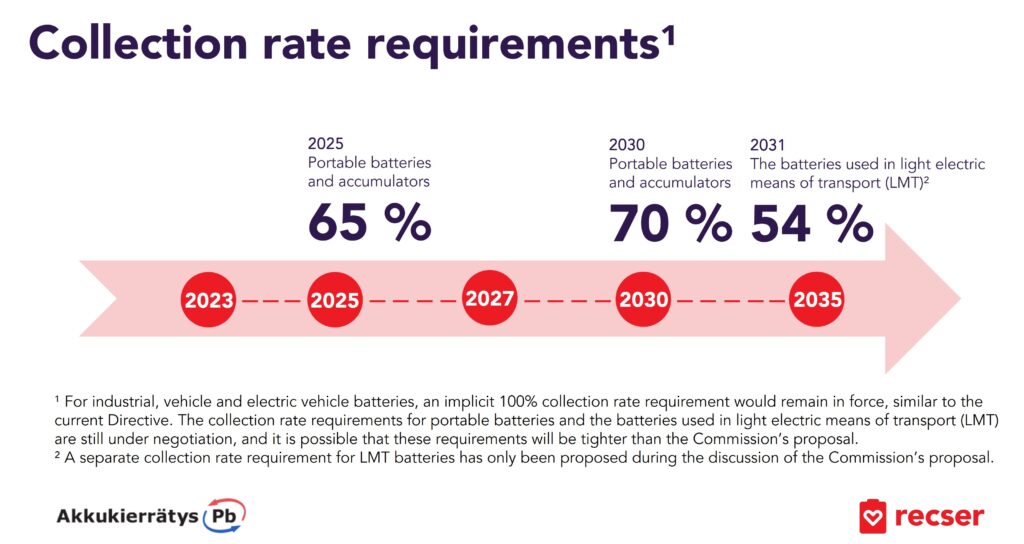Processing of the EU Batteries Regulation has resumed in Brussels after the summer recess. The latest estimate is that the regulation could be adopted and enter into force next spring.
At the International Congress for Battery Recycling ICBR in Salzburg on 14 September, Commission representative Cesar Santos estimated that it is possible that a political agreement on the EU Batteries Regulation will be reached in the trilogue before the end of this year. This would allow the regulation to be adopted and enter into force next spring. The next negotiation at the political level will be the trilogue scheduled for 11 October.
There is a slight delay in the processing schedule, as there are still some open issues that need to be addressed in order to find a compromise.
What are the obligations for the use of recycled raw materials?
During the negotiations under the French Presidency before the summer, the first part of the regulation was discussed, including the definitions, restrictions on hazardous substances and carbon footprint calculation requirements for larger batteries. In the discussions, the EU has also sought clarity on the types of batteries for which it is appropriate to set the blending obligation, i.e. a requirement to use recycled raw material. There has also been discussion about whether the recycled content would include only raw material recycled from used batteries. The Russian invasion of Ukraine and Europe’s drive to disengage from Russian fossil energy have made the raw material objectives of the EU Batteries Regulation even more topical and strategic. Promoting markets for recycled raw materials will help EU to become more self-sufficient in battery raw materials.
The removability and interchangeability rules for portable batteries will be extended to the batteries used in light electric means of transport (LMT). Replacement batteries should also be offered for these batteries after a certain period of time from the date of placing the battery onto the market. The question of whether to include only wheeled electric vehicles in this category or also vehicles such as watercraft has not yet been resolved in the negotiations.
Now, in the autumn negotiations, the EU is also seeking compromises on issues regarding the later stages of batteries’ life cycles in Chapter VII, where aligned producer responsibility plays a key role in the transition to the circular economy. The chapter contains important articles on collection, recycling and material recovery requirements. As the calculations, especially for lithium batteries, are based on projections of future waste streams, the setting of sufficiently ambitious yet realistic targets is understandably challenging. The table below shows the current timetables and levels of requirements under the Commission’s proposal.

One issue to be resolved in the negotiations is the legal basis for Chapter VII. A legal basis that would leave more national leeway for managing the producer responsibility has been suggested in the negotiations.
Similar regulations are anticipated for other products as well
A wide range of people are interested in and affected by the proposed regulation, as it is the first concrete body of rules of the European Green Deal. European Green Deal is an EU Strategy to become climate-neutral by 2050 so that economic growth does not require an increase in resource use. Batteries play a key role in the implementation of this strategy, as a regulation that factors in the whole life cycle of batteries and accumulators will serve as a guide for other product regulation in the EU.

